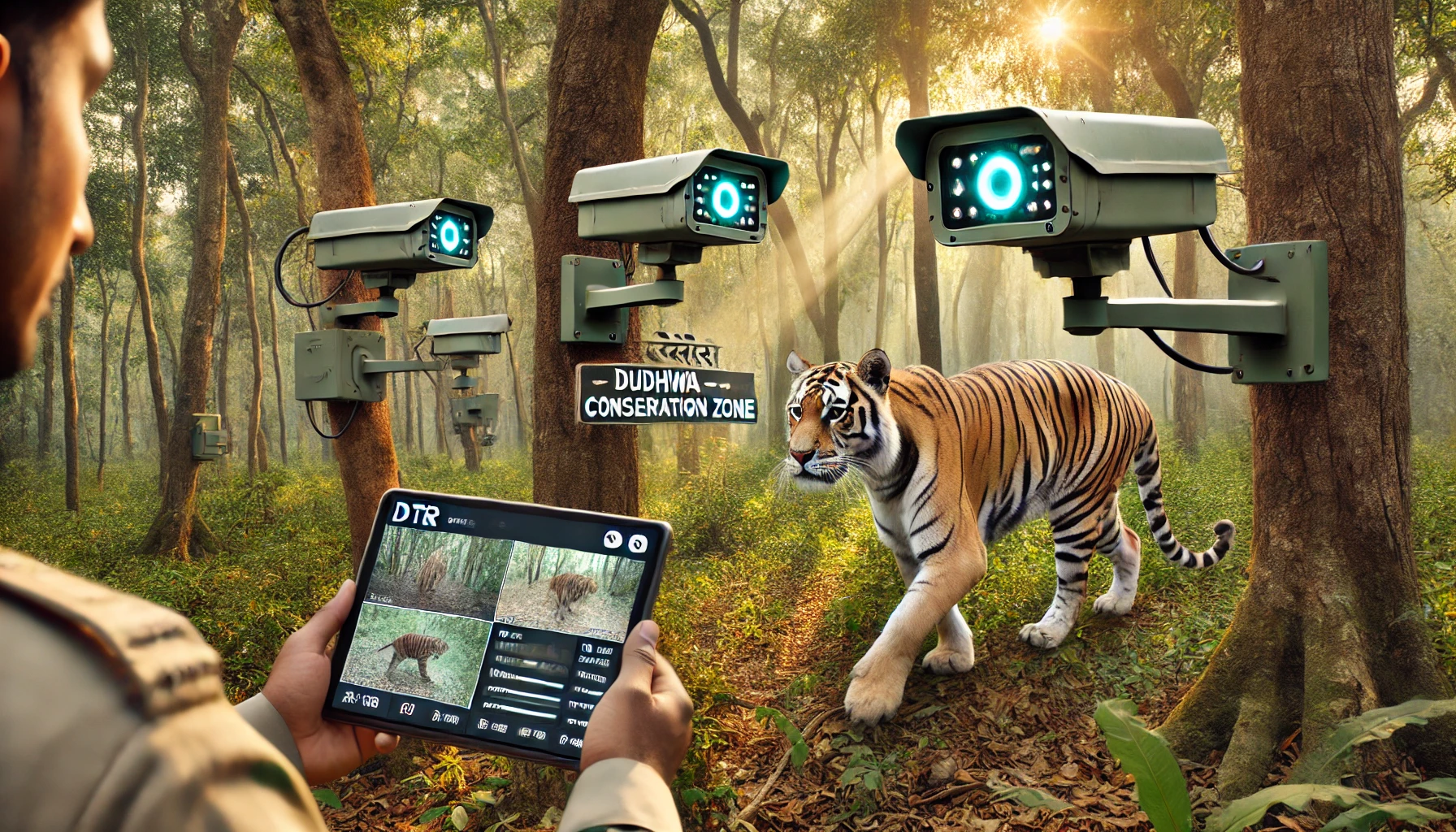Uttar Pradesh’s tiger reserves face pressure from rising wild cat numbers; AI cameras will track tigers in real-time to prevent human conflicts.
The rise in the number of wild cats has put tiger reserves in Uttar Pradesh under pressure, but the growing incidents of tigers wandering out has compelled the forest department to use the most advanced tool artificial Intelligence (AI) in the uninhabitable core forest zone.
The most recent such incident was in Lucknow’s Rehmankheda where a tiger kept wandering for 91 days before being caught on March 6.
The start is from Dudhwa Tiger Reserve (DTR) that stood fourth in the country with 135 tigers as Uttar Pradesh recorded a rise of 18.49% in total tiger population, according to “Status of Tigers” in India report 2023.
“This is a first-of-its-kind measure being brought in Uttar Pradesh under Project Tiger (PT). The aim is to save the wildlife by tracking in real time any of their risky behaviour, particularly when they move towards human settlement from inside their natural habitat – the core forest,” said Raja Mohan, field director, DTR.
Tigers wandering out and trespassers entering DTR will be captured and an immediate alert will be sounded as the forest department plans putting up AI-based cameras along vulnerable fringes of the core and buffer forest area.
At least six wild cats have died outside the core forest area since April 2023, where two were beaten to death by men and one died in a road accident when a speeding car hit it on the Bhira-Mailani road in the buffer zone.
AI-based cameras work with internet support and send alerts as soon as they catch an image of the animals fed – tiger, elephant. The alert will be sent to the local divisional forest officer (DFO) or to as many people as required. The real time image comes with an alert and location of the tiger/wild animal and the time it was caught which is the same as when the animal moved in front of the camera.
“It is up to the officer then to decide which way the animal may have gone, if it is a risk to human life, and this is done by analysing the image. Action too is decided at that time,” said Raja Mohan.
AI-based cameras are different from camera traps used commonly in forests. Camera trap images are retrieved manually when a forest staff visits the spot and takes out the memory card. A camera trap only tells when the animal came but does not send an alert on movement. Camera trap images are used for purposes such as census and research.
The use of AI-based cameras is being done in DTR after a month of trial in Katarniaghat Wildlife Sanctuary (KWS).
“From Katarniaghat, we got images that were useful. Now, the process has begun to procure AI-based cameras for DTR and the identification of places for installation has also been done,” said Raja Mohan. However, he refused to divulge the locations, for security reasons, where exactly the cameras would be placed/installed.
At the beginning, about a dozen cameras will be brought with funds from PT. The killing that provoked AI measures for Dudhwa include the death of two-year-old tigress beaten to death in Phulwariya of buffer zone after it attacked two villagers, and the killing of a 7-year-old male tiger by a speeding car on Bhira-Mailani road in the buffer zone both on February 26.
DTR stood fourth in the country among tiger reserves as Uttar Pradesh recorded a rise of 18.49% in total tiger population, according to the state level data shared under “Status of Tigers” in India report in 2023.
Man-animal conflicts take place when confused tigers leave their natural habitats and enter human habitat. Keeping them in their natural living place is the best solution to let tigers and humans survive, said a senior forest officer.
UP’s share in Shivalik Range, which comprises Bihar, Uttarakhand and UP, is 205 out of 819 tigers reported in census in Shivalik Range. Uttar Pradesh has four tiger reserves including Amangarh, Ranipur and Pilibhit Tiger Reserve.
Source: https://www.hindustantimes.com/





